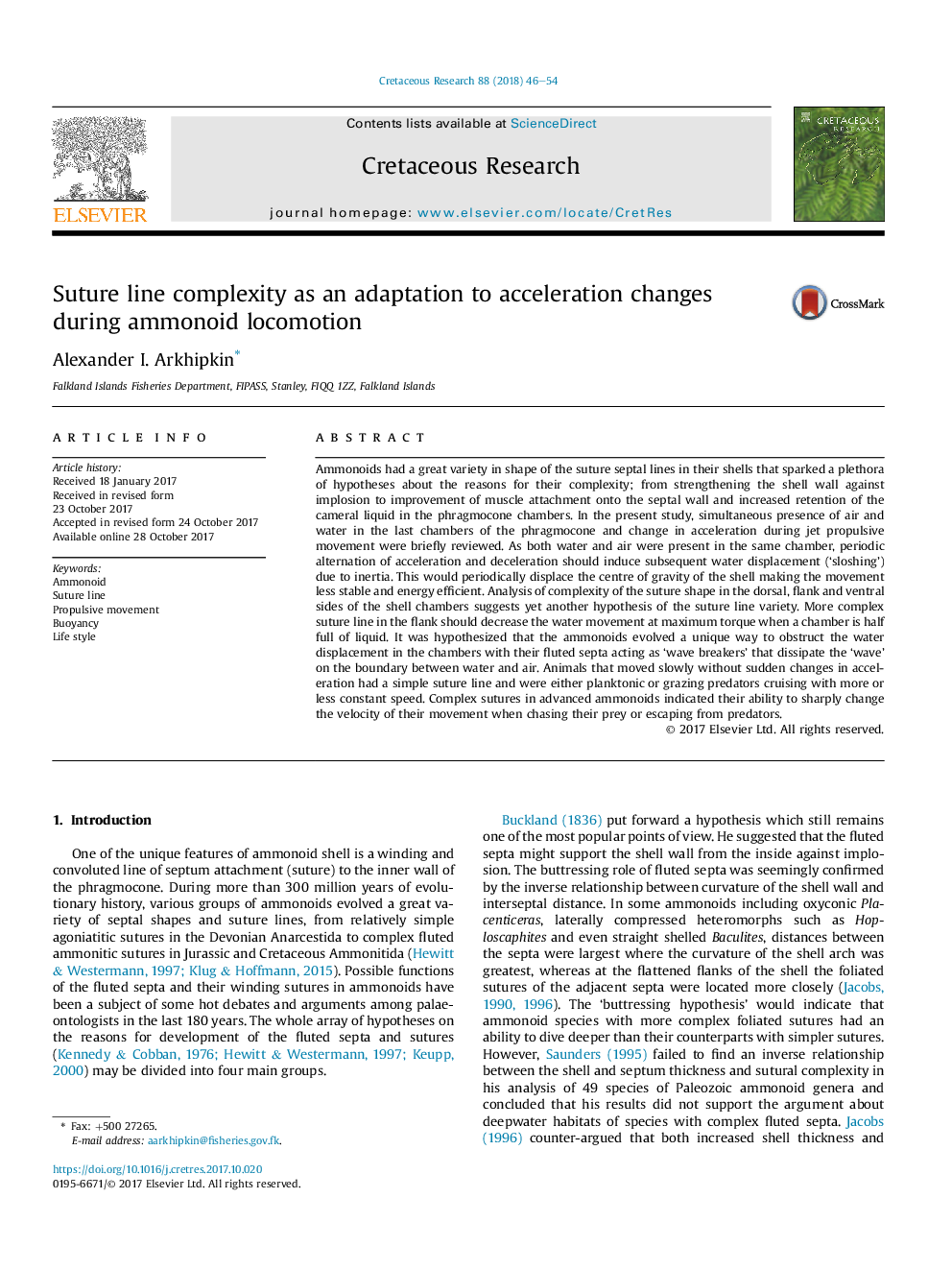| کد مقاله | کد نشریه | سال انتشار | مقاله انگلیسی | نسخه تمام متن |
|---|---|---|---|---|
| 8916252 | 1642035 | 2018 | 9 صفحه PDF | دانلود رایگان |
عنوان انگلیسی مقاله ISI
Suture line complexity as an adaptation to acceleration changes during ammonoid locomotion
ترجمه فارسی عنوان
پیچیدگی خط صاف به عنوان سازگاری با تغییرات شتاب در حرکات آمونیوئید
دانلود مقاله + سفارش ترجمه
دانلود مقاله ISI انگلیسی
رایگان برای ایرانیان
کلمات کلیدی
آمونوئید، خط ساقه، جنبش حرکتی، شناوری، شیوه زندگی،
موضوعات مرتبط
مهندسی و علوم پایه
علوم زمین و سیارات
فسیل شناسی
چکیده انگلیسی
Ammonoids had a great variety in shape of the suture septal lines in their shells that sparked a plethora of hypotheses about the reasons for their complexity; from strengthening the shell wall against implosion to improvement of muscle attachment onto the septal wall and increased retention of the cameral liquid in the phragmocone chambers. In the present study, simultaneous presence of air and water in the last chambers of the phragmocone and change in acceleration during jet propulsive movement were briefly reviewed. As both water and air were present in the same chamber, periodic alternation of acceleration and deceleration should induce subsequent water displacement ('sloshing') due to inertia. This would periodically displace the centre of gravity of the shell making the movement less stable and energy efficient. Analysis of complexity of the suture shape in the dorsal, flank and ventral sides of the shell chambers suggests yet another hypothesis of the suture line variety. More complex suture line in the flank should decrease the water movement at maximum torque when a chamber is half full of liquid. It was hypothesized that the ammonoids evolved a unique way to obstruct the water displacement in the chambers with their fluted septa acting as 'wave breakers' that dissipate the 'wave' on the boundary between water and air. Animals that moved slowly without sudden changes in acceleration had a simple suture line and were either planktonic or grazing predators cruising with more or less constant speed. Complex sutures in advanced ammonoids indicated their ability to sharply change the velocity of their movement when chasing their prey or escaping from predators.
ناشر
Database: Elsevier - ScienceDirect (ساینس دایرکت)
Journal: Cretaceous Research - Volume 88, August 2018, Pages 46-54
Journal: Cretaceous Research - Volume 88, August 2018, Pages 46-54
نویسندگان
Alexander I. Arkhipkin,
